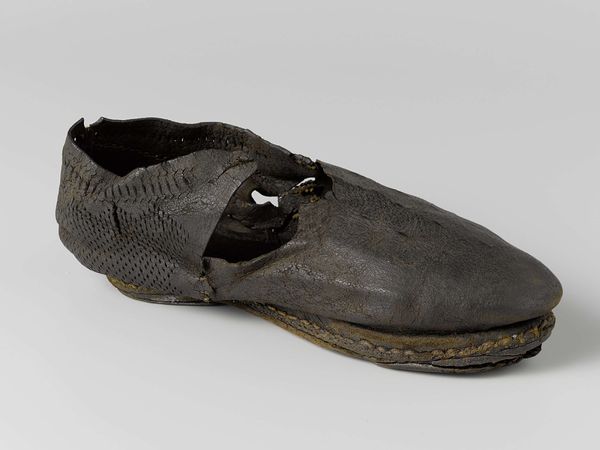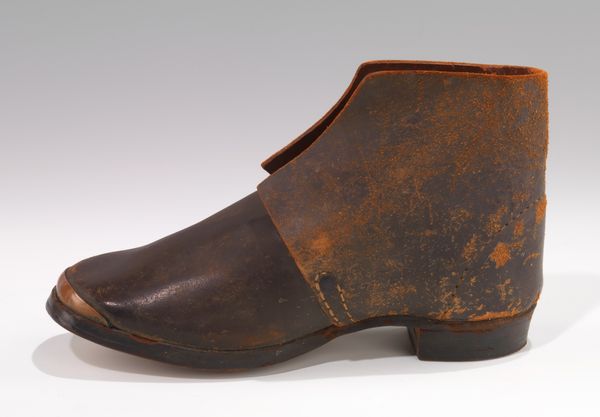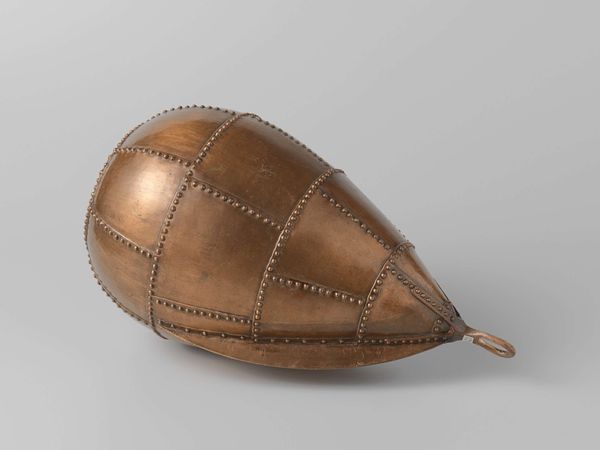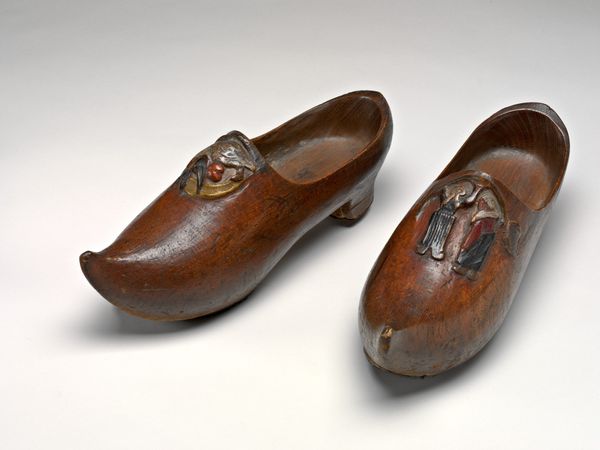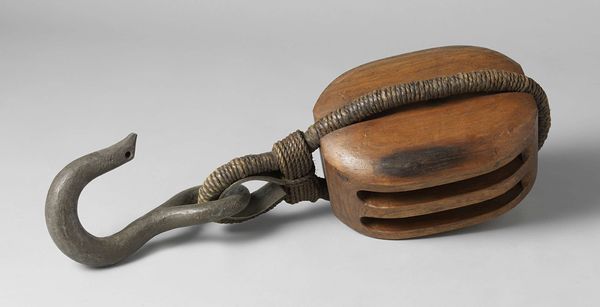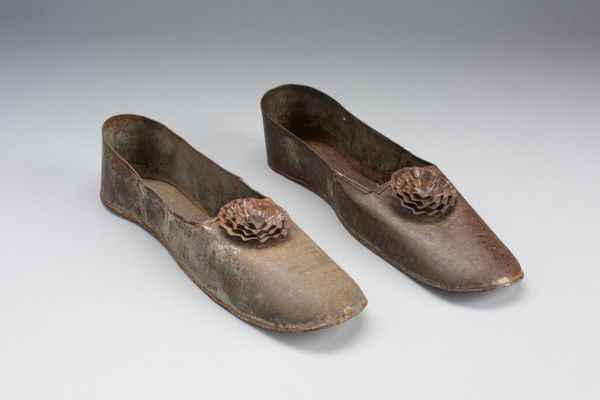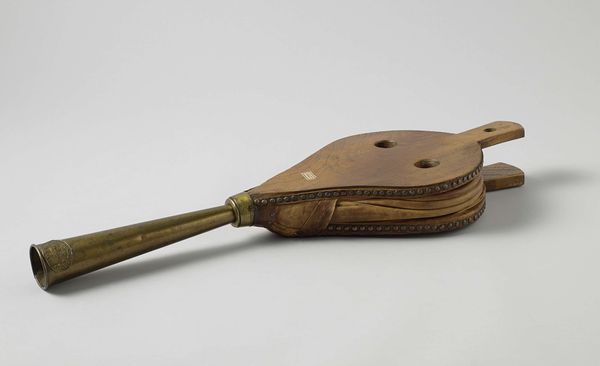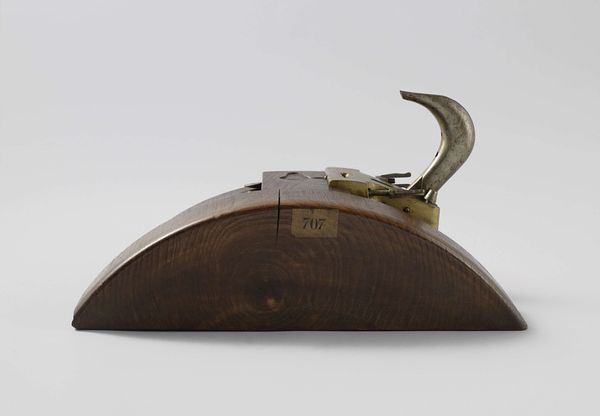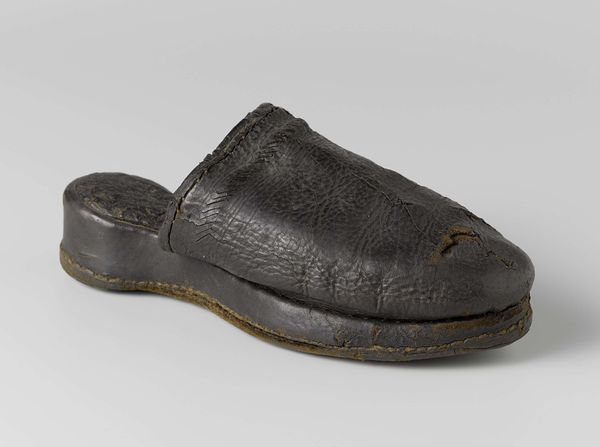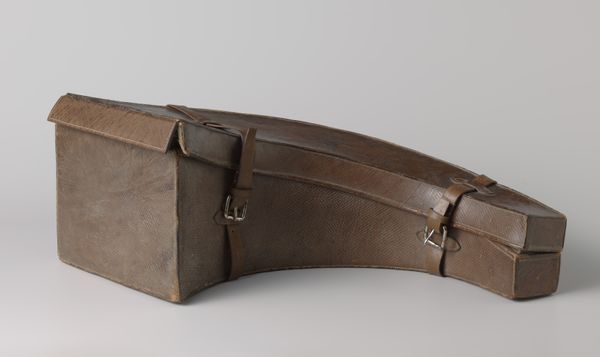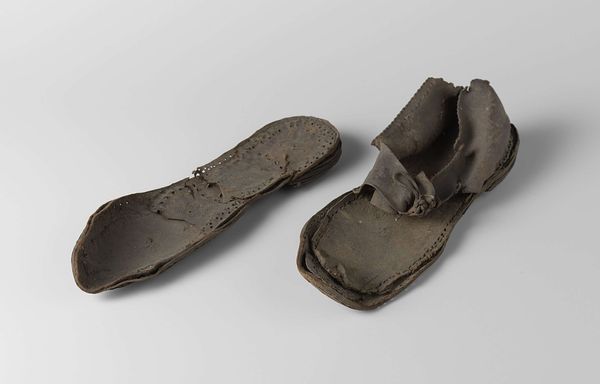
Dimensions: length 16.0 cm, width 5.0 cm, height 5.5 cm
Copyright: Rijks Museum: Open Domain
Curator: Immediately, the sheer novelty grabs you. It's a shoe, but...not. Editor: Quite so. We’re looking at a piece titled "Doos voor snuif- of tabak in de vorm van een schoen," which translates to "Box for snuff or tobacco in the shape of a shoe." It dates from around 1780-1786 and would have belonged to Jacob Worms. Crafted from metal, it's a wonderful example of Rococo decorative art. Curator: Rococo extravagance, indeed! The shoe form itself, and its transformation from something utilitarian into something purely ornamental is very witty. Also, I am intrigued by this particular design being the form of this container: footwear was already a commodity in Europe as early as 1600, so why this fetishized shape? Editor: Perhaps we can view it through the lens of formalism; focusing first on how the form echoes then disrupts established symbolic codes, but without escaping representation: the sharp lines of the shoe itself contrast nicely with the softness of the portrait medallion. The material—presumably bronze—takes on an almost leather-like texture. Curator: Exactly, and beyond those design principles you're calling out: What did Jacob Worms do? Did he commission this piece, to show off his style in an excessive demonstration of capitalistic pleasure? Who crafted this: and what of the laborers that likely smelted and pressed this snuff container to shape? Editor: Those labor questions certainly matter and help nuance how this artwork existed, then, and how it's valued now, however it still needs a formal reading that acknowledges both form and meaning as intertwined aspects: notice that decorative etching around the perimeter—the symmetry, the delicacy...it’s masterful! How does it change our perception? Curator: Well, if we are looking closely, the circular portrait at the opening of the box and adjacent to the curlicue etching suggests elite ownership as an exercise of status, or that these aesthetic values themselves denote wealth and the leisure time it takes to create beautiful things at a smaller, intimate scale. This object tells us plenty. Editor: It truly does. Seeing how our approaches intertwine can make us perceive new ways of understanding, and ultimately, enrich the viewers experience.
Comments
No comments
Be the first to comment and join the conversation on the ultimate creative platform.
